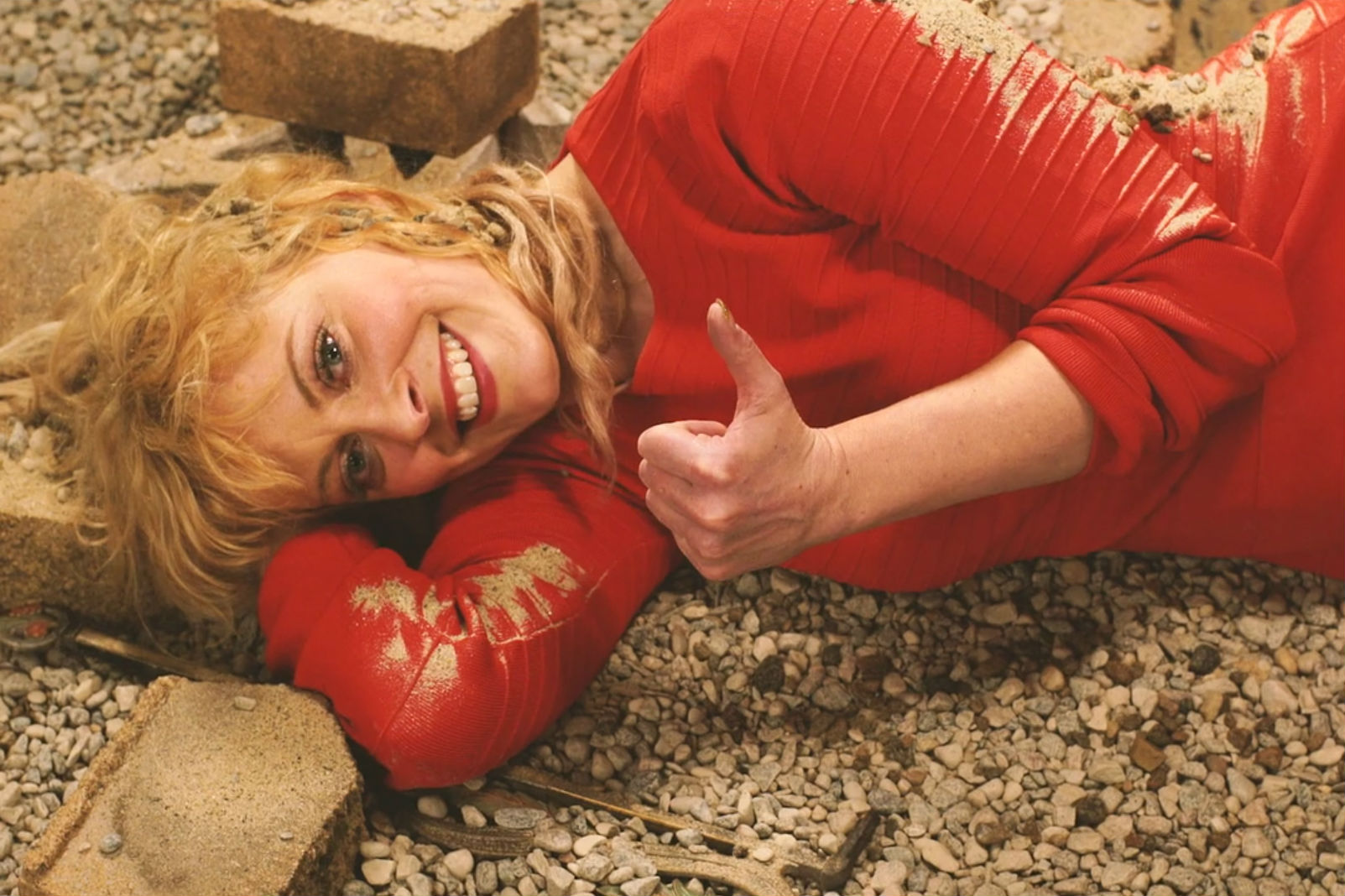It’s been a little while since we heard from Little Scream, a.k.a. Laurel Sprengelmeyer. She’s been busy: nearly two years spent touring behind her 2011 debut, The Golden Record; two more crafting its successor, Cult Following; and a year waiting out the inevitable delay between an album’s completion and its final release. Now that her sophomore LP is finally out on Merge Records, the thirtysomething Dubuque, Iowa native is ready to talk about the time she spent making it.
Cult Following is a bolder, brighter record that sees Sprengelmeyer set aside acoustic guitar in favor of her own brand of intricate and exuberant chamber pop. It features a host of all-star collaborators, including Sufjan Stevens, Sharon Van Etten, Kyp Malone of TV on the Radio, and producer Richard Reed Parry of Arcade Fire. Sprengelmeyer is also a painter, and as she describes her meticulous visual art process, it’s easy to see why her richly textured compositions required two full years to take shape. “I’m a classically trained oil painter, so I work with a lot of layers and build it up. It takes a while to finish them,” she says. Each piece of Cult Following blends seamlessly into the next, a mural of angular guitar and spritely vocals that reveals itself with glammy flourish (“Love as a Weapon”) or hushed, folky intensity (“Wishing Well”).
The album’s initial inspiration was a real-life nature cult residing on an old coconut plantation in a remote area of northern Brazil. When a friend brought Sprengelmeyer to visit in early 2013, the environmentalist commune (which she declined to name) was in flux. Some members of the community were simply dedicated to living off the land, while others had taken to following a charismatic leader and forgoing solid food, believing they could draw energy from the sun. Ritual fasting plays a role in most religions, but visiting as an outsider, Sprengelmeyer says, offered a unique opportunity to watch a nascent belief system establish itself.
SPIN spoke to Sprengelmeyer over the phone — from her adopted home in the Plateau-Mont-Royal neighborhood of Montreal — about how she developed her Cult Following.
I read that you visited a cult-like group in Brazil who were light eaters.
I really like the name Cult Following for this record for a number of reasons. There are some religious themes — or, not even religious themes, but religious beliefs. Whether they have to do with personal beliefs in relationships, or in something else — really questioning the nature of our own beliefs, in terms of how that shapes our emotional reality. I titled the record that and then was thinking, “Oh, I did actually start writing this song while I was visiting that weird cult in Brazil.”
Who are the people in that community? Are they Brazilians?
Not necessarily all from Brazil. Some from Portugal, [and elsewhere in] Europe. I think we were the only North Americans that were there at the time. Some Israeli. A real international group of people. Half the people that are there are just environmentalists that wanted to live off the grid and then the other half of the community are into the “thing,” all wearing white. It’s a really tight belief structure, and then when you’re hanging out with the same people in the same society, same place, it’s the classic model for how these things take shape.
There are a few people in the West who’ve come forth with this belief that they can live off the sun. There’s been a few who got semi-tabloid-famous in the U.K. in the past.
The woman at the center did not eat for four years. She drinks coconut water, because there are coconuts everywhere, and juice, stuff like that, so it wasn’t like she wasn’t getting any nutrition, but [she didn’t] properly eat for four years. There are other people there [for whom fasting was] clicking on some kind of biological response to starvation that would put them in a really high-functioning mode. Something was happening with their metabolism that was working, and they had all this energy… and then there were other people who just were straight-up dying of starvation.
You’re from Iowa, but you moved to Montreal more than ten years ago. Unlike the U.S., Canada offers funding for musicians and other types of artists. As a transplant, are you eligible for that?
Once you become a permanent resident, you are eligible for it.
How do you feel national arts funding affects the scene locally?
I think it’s crazy helpful to have any help from a source that’s non-commercial. I think it gives people a little bit more space to explore things creatively for sure, with a little bit less pressure. It’s helpful. [In the U.S.] it’s more corporate support, different commercial kind of opportunities, stuff like that, that people pursue more aggressively down there. People don’t do that in the same way here as much — they may get [corporate sponsorship], but there’s less of a culture of that.
What’s the biggest risk you took on Cult Following?
The biggest risk that I took was just doing music that was interesting to me and just letting that go wherever I want it to go, creatively speaking. That’s definitely a risk: really committing to doing whatever I was really interested by. It’s not the smartest thing to do from a marketing perspective, if that’s all you’re thinking about. [Laughs.] How do you describe this music? I think not having something succinctly described or describable is a risk in this day and age. Especially when people don’t have a lot of time.
What’s next for you artistically?
As usual, I’m going in very separate directions. Since Prince died, I’ve been thinking about him all the time. There are definitely a lot of Prince-inspired moments on this record [Cult Following] for me. There’s part of me that’s very much going in that direction and then the other part is getting way, way more gentle and atmospheric and dreamy. I think the question for me is whether or not I try to marry them both together again for my next record or whether I just let them go their own directions and do separate things.





